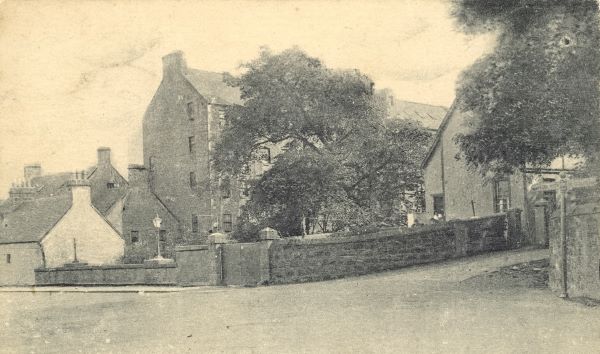

The Textile Industry
The Textile Industry
Up until the second half of the 18th century the lands, which now make up East Renfrewshire had an economy based on agriculture.
However, the arrival of the Industrial Revolution had a huge impact on the area, and it was the textile industry which exploded in East Renfrewshire. The network of local rivers such as the Levern and the White Cart, provided the both the motive power to work the machinery as well as the large volume of water needed for many of the textile processes.
Neilston became a textile village and a series of bleachworks, printfields and mills ran from there, along the Levern, to Dovecothall in Barrhead. Netherlee, Busby and Thornliebank all grew up around textile works and many mills and works opened up in already established areas, such as Mearns and Eaglesham.
The industry transformed the landscape, the population and people’s daily lives and laid the foundation for the development of the area as it remains today.
For a long time before the industrial revolution, textiles had been produced and worked in the area. However, it was a home based industry, a prime example being the proliferation of home based handloom weavers. With the invention of new technology, huge mills and works could be established to produce large volumes of material in a relatively quick timeframe.
The industry involved various processes. Some of the earliest ventures in East Renfrewshire started as bleachfields. These were originally large open areas, close to the river, where cloth was spread out to be bleached. Bleaching was carried out using a combination of natural sunlight and early whitening agents, including such unsavoury liquids as urine or sour milk. This process was able to move indoors and lose its dependency on the weather after Charles Tenant developed a bleaching powder based on chlorine.
Some of the earliest cotton mills in Scotland were built in East Renfrewshire, beginning with a mill at Busby in 1778 and one at Dovecothall, Barrhead in 1779. The area also became a centre for the production of high quality printed cloth, with large printworks established at Thornliebank, Busby and Barrhead.

The population grew at a fast pace, with people coming from as far away as Ireland and the Highlands to gain employment in the mills and printworks in the area. The peak of this industry came in the middle of the 19th century; this is evident in the population of Busby, which grew from 902 in 1841 to 2,155 in 1881. The mill and printwork owners built accommodation for the workers, first of all rows of thatched cottages then 2-storey terraces called ‘Lands’ and later, tenement buildings.
Life for the workers was hard. They worked 6-day weeks with only 2 days holiday per year and their working day was usually about 14 hours a day, sometimes more. Conditions were dangerous. For example, the atmosphere in the mills had to be kept hot and damp and diseases such as bronchitis, pneumonia and tuberculosis were rife.
Children from the age of 7 were also put to work in the mills. In fact, in the early 1800s they outnumbered the adult workers considerably.
The Statistical Accounts of 1791-9 show the number and age of people working in the mills in Busby as
Males under 15 – 100
Females under 15 – 110
Males over 15 – 60
Females over 15 – 90
Children endured the same dangerous conditions and long working hours as the adults. In 1805, the government passed the Health and Morals of Apprentices Act, which limited a child’s working day to 12 hours, the last 2 of which were to be spent in the instruction of reading, writing and arithmetic. This had limited impact but in 1872 another Education Act made education compulsory from the ages of 5-13.

At the close of the 19th century, the textile industry began to decline. The mills and printworks gradually began to close down and for a while the population began to decrease. However, as transport lines began to improve between the area and the city of Glasgow, what now makes up East Renfrewshire began to become attractive as residential suburbs and the population started to grow once more.
